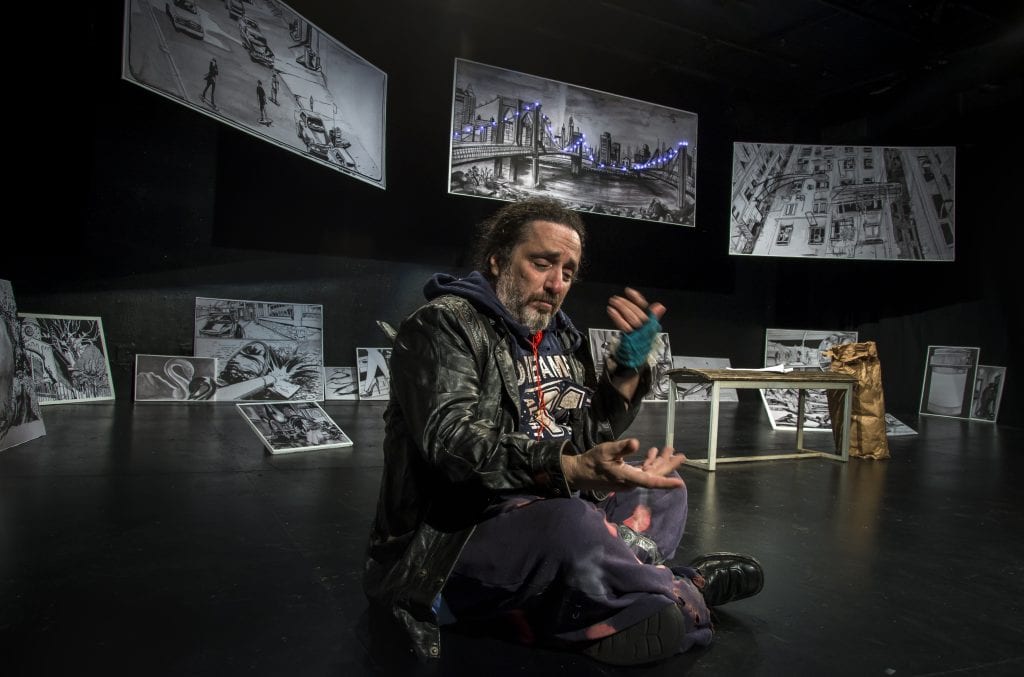The topic of homelessness and putting a human face and story to its community is something most people go out of their way to step over (literally), avoid talking about and ignore but not so in this solo performance piece which confronts the realness of the experience head on.
The Bench: A Homeless Love Story is the brainchild of New York artist, activist, coach and performer Robert Galinsky who takes on portraying five homeless characters and tells their intertwined stories through alternating monologue and dialog at the intimate Cherry Lane Theater. Mr.Gallinsky humanizes the stories of these people’s lives as he embodies each of the characters in voice and manner.
It is the late 1980’s in the height of the still mysterious AIDS crisis in urban New York City. The scene is well set on the small stage with hand drawings of iconic 80’s NY scenes by artist Daphne Arthur’s graphic novel adaptation of the play and urban audio design by composer and instrumentalist Deep Singh.
The interaction takes place around a central meeting place (the bench) where homeless people from varying backgrounds end up in similar circumstances and form their own network and community. On the bench these personalities intertwine discussing the happenings of the day and their life experiences which begin to unravel in conversation. We hear from Graveyard who came to misfortune after getting released from prison for a crime that was not initiated by him, Mark who is a victim of years of psychotherapy gone wrong, JD a truck driver who couldn’t get back on his feet after being in a serious accident, and Joe, a veteran war hero who had trouble adjusting back into society upon coming home. All of them interact with Lorraine who lives in an apartment across the street after losing her teaching career for being wrongly accused of abusing a student. As a result of her situation and losing her livelihood, she becomes an HIV+ drug addict and prostitute who ends up falling in love with one of these men in a very touching, unique love story.
The overall topic of the material is quite fascinating but the execution and ever changing back and forth of Mr. Gallinski moving between characters, oftentimes line to line, is where the piece loses its effectiveness and becomes hard to follow. It is most engaging when Mr. Gallinsky gets out of character into monologue mode to describe what circumstances brought these people to where they currently are and gives the work its true justice. Not many people think or care about the anonymous homeless person on the street but understanding through their stories that it could possibly be one unfortunate incident away turns the situations very real and relatable to everyone – it could happen to any one of us.
I very much admire Mr. Gallinsky’s passion for telling these stories based on true accounts from meeting these people. Not many artists would be willing to tackle the topic. That is what makes it so fascinating in theory but the production still seems like it is a work in progress and potentially applicable to an expanded version with separate actors taking on each of the characters. The task of performing and alternating between all these personalities alone was a challenge that complicated the material more than it needed to be. But a valiant and necessary effort it certainly is.

